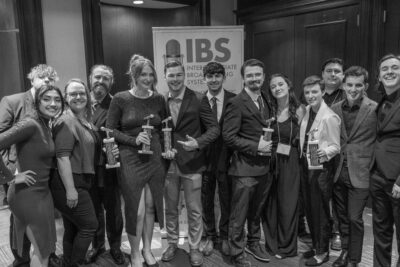American Sign Language students might be trading the sunny beaches of Jamaica for the snowcapped mountains of South America.
Tom Meyers, director of international education, will travel to Peru this month in hopes of setting up a dual-track Study Service Term program there, accommodating both students who are studying Spanish and those who are learning American Sign Language.
After ASL students returned from SST in Jamaica last fall, Goshen College decided to end the program there.
The short-lived Jamaica SST location started in the summer of 2007 and lasted for three terms. Jamaica was the first SST unit that was designed expressly for ASL; non-ASL majors were invited to participate as well, but few signed up, leaving overall enrollment low.
Six students are currently signed up for “Jamaica” SST in the fall of 2012, though the college has not determined where they will go — only that it will not be to Jamaica. Peru is the leading alternative.
“If it’s going to go, we have to get it ready and soon,” Meyers said.
In late September, Meyers will be traveling to Peru to explore the possibility of a dual-track program. This would mean that students of American Sign Language and of Spanish would study Peruvian history and culture together in Lima before leaving for service. If approved, it would be the first time that the college offered a dual program such as this.
“We hope that ASL students would be able to stay with deaf families and serve at one of the many deaf schools in Peru,” Meyers said. Since fall enrollment for Peru is consistently under the capacity, Meyers believes that it is an ideal combination as the program’s term limit is set at 24 students.
While in Peru, Meyers will be searching for host families, language instructors and service locations specifically for the American Sign Language students. Since Peru is a well-established SST program, Meyers is optimistic that the plan can work.
Despite the college’s efforts to establish a new SST location, some students are considering Gallaudet University in Washington, D.C. to fulfill some of their general education requirements. “I hope that there would be an opportunity to attend Gallaudet if there was no other SST option available,” said Stacy Wyse, a sophomore ASL major.
Sam Heberling, a freshman ASL major, is anxiously awaiting a decision. “I would like it to be out of the U.S. because that is how you get the most experience,” she said. “I have been looking forward to traveling the world for my SST and I wouldn’t want to stay in the United States.”
Angelica Lehman, a senior ASL interpreting major, attended Gallaudet University last fall when the final trip to Jamaica occurred. She stated that the reason she chose to study at Gallaudet University was to continue concentrating on American Sign Language.
“It would have been awesome to go to a different country, but at Gallaudet I was still able to escape the world I knew,” she said. “I felt like a minority, even though I was still in the United States. I experienced a very different culture stepping onto Gallaudet’s campus.”
Lindsay Goodman, a senior ASL interpreting major, traveled with the last group to Jamaica. She described the country as a wonderful place to experience deaf culture despite the difference in dialect. In Jamaica, ASL students had to adjust to Jamaican sign language rather than use ASL. This would be the case in Peru or in any other country outside the United States, but Goodman described this as a necessary challenge.
“I believe the point of any SST is to try to communicate with the people of the country and to adapt and better understand their language,” she said. “My experience in Jamaica undoubtedly made me a better interpreter and communicator.”

